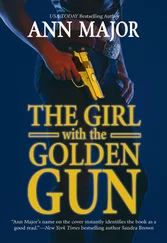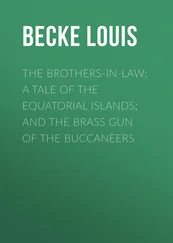This posed no great problem in Jones’s eyes. About two weeks later, on August 30, 1991, Faraz met with Jones. Jones gave Faraz a Virginia driver’s license belonging to a twenty-one-year-old Virginia resident, Brant Gomez Requizo, who had lost his driver’s license earlier that year. Jones took Faraz to Guns Unlimited, where Faraz bought six high-caliber handguns—four for himself, and one each for Jones and a friend of Jones’s who had accompanied them to the store. A week later Faraz sold three of his guns to Jones for $1,200. Faraz would later tell ATF agents that Jones had bragged he could sell the guns “for a ‘big profit’ in the Tidewater area to people who would take them up north and make even a bigger profit from them.”
In the gun trade, buying more than one gun at a time automatically raises a warning flag; in fact, ATF requires dealers to mail in a multiple-purchase form anytime a customer buys two or more handguns within a period of five working days. Nonetheless, in the absence of specific local regulations, anyone in America can walk into a gunstore and buy a hundred handguns. The dealer is under no obligation to telephone ATF, or even to inquire why anyone would want so many guns. All the dealer must do is mail the form by the close of business on the day of the purchase. The buyer, meanwhile, is free to scoop up his hundred handguns and start selling.
ATF will investigate high-volume purchases, provided it learns of them. If a purchase takes place on a Saturday night, however, ATF will not see the multiple-purchase form for several days. Meanwhile, the guns will begin their rapid migration through the illicit-arms network. Guns trafficked from Norfolk, Virginia, for example, typically wind up in the hands of crooks in Washington, Philadelphia, and New York, half a day’s drive up Interstate 95—nicknamed the Iron Road for all the illicit weapons that make the trip. In 1992, ATF conducted a massive tracing project to find out where the guns recovered from crime scenes in New York City had begun their travels. The agency discovered that Virginia alone accounted for 26 percent of the guns, more than any other individual state. Florida came in second, supplying 19 percent; Texas third with 11 percent; Georgia, home of S.W. Daniel, was fourth at 9 percent. Even Batman, in a December 1992 comic book, noted how easily the crooks could buy guns in Virginia. In the early 1970s most crime guns seized in New York came from South Carolina, but in 1975 the state passed a law allowing consumers to purchase only one gun per month. Although the law included a huge loophole—for inexplicable reasons it exempted purchases made at gun shows, a common source of crime guns throughout the country—it succeeded in sharply reducing the number of South Carolina guns found at New York crime scenes. South Carolina contributed only 2 percent of the New York crime guns traced by ATF in 1992. Virginia, deeply embarrassed by its role as crime-gun distributor of the Eastern Seaboard, passed a similar law in 1993. Before it took effect, however, ATF found that gun buyers in Virginia made 3,400 multiple purchases a year, or nearly ten a day. That the notification of such purchases takes place by mail in an age when virtually every ordinary consumer transaction involves some immediate form of computer verification is but one of the peculiar ironies that characterize arms commerce in America.
Mike Dick managed the first sale to Faraz and was immediately suspicious, enough so that he telephoned the ATF field office in Norfolk to alert the bureau to Faraz’s purchases. (Dick also filed the multiple-purchase form.) Over the next two weeks Faraz returned three more times and bought twenty-nine more guns, selling twenty-five to Jones, according to court documents. On the last of these shopping trips Faraz placed an order for thirteen more handguns, all Glock pistols, the same guns now adopted by police departments around the country. Mike Dick telephoned ATF while Faraz was still in the store and helped choreograph an undercover operation against Faraz. Dick allowed the bureau to choose the day on which Guns Unlimited would notify Faraz that the guns he had ordered were ready for pickup. The agency chose September 17, 1991, a Tuesday.
Agents took up positions inside and outside the store and waited. At about five-fifteen that evening, a 1987 Pontiac Grand Am, registered to Faraz, pulled into the Guns Unlimited parking lot. Faraz stepped up to the counter and presented Brant Requizo’s driver’s license, which gave an address in Norfolk, Virginia. As an ATF agent watched, Faraz signed the required form 4473 with Requizo’s name. Faraz left the store carrying the guns, then drove home, where agents kept him in sight while others contacted first Brant Requizo’s mother and then Brant himself to confirm that his license had been lost.
At eight-forty, the agents arrested Faraz at his home. Faraz admitted buying the guns for Matthew Jones—Jones, he said, had agreed to pay him $6,000 for ten of the Glocks, or roughly $1,000 more than Faraz had paid to Guns Unlimited. The agents persuaded Faraz to make a monitored call to Jones and arrange to deliver the ten guns later that night. The stakeout team followed Faraz to the two A.M. rendezvous and arrested Jones.
Jones in turn told the agents that he had arranged to sell the guns to two New Yorkers and was to be paid $500 for his services.
Both Faraz and Jones were convicted of violating federal firearms laws. At Faraz’s sentencing hearing on January 9, 1992, his attorney, John Cooper, complained to the judge that the clerks at Guns Unlimited should have been able to tell from the picture on Brant Requizo’s driver’s license that Faraz was not Requizo. Requizo, the license showed, stood five foot five and weighed 131 pounds; Faraz was a 215-pound weight lifter. Cooper said, “There’s something fundamentally strange about our society allowing somebody to go in and buy forty-eight guns within the course of a month on an ID that doesn’t look anything like him.” The judge, however, sentenced Faraz to seven months in prison, with two years’ supervised release.
Mike Dick was proud of his role in the investigation. “I don’t just send the forms in and hope it takes six months for ATF to get around to them,” Dick told me. “If there is something that’s obviously a problem—and this obviously was—my opinion is the best way to correct the problem from a society standpoint is to get these people off the street. If I just refuse to sell them weapons, nothing’s going to happen. They’re just going to go to someone less ethical than myself. And he may send the multiple-purchase form in, he may not send it in. Not all dealers are good.”
Society did not make out in this deal quite so well as Guns Unlimited. The store booked at least $15,000 in sales. Yet twenty-nine of the forty-eight handguns that Faraz bought wound up in Matthew Jones’s hands and thus in the gun-trafficking network, where weapons migrate quickly to their final users. (Some of the guns were kept by Jones, Faraz, and some of Faraz’s friends.)
In the second trafficking case, a local college student, Dean Archer, was recruited to buy guns by a convicted felon. He made his first purchase on December 1, 1990, when he bought four handguns from Guns Unlimited—not just any guns, but four inexpensive pistols made by Davis Industries, a California company whose guns are favored by traffickers who buy them cheaply in jurisdictions with lax controls, then sell them at a steep markup to inner-city buyers.
No one at Guns Unlimited seemed overly concerned by the purchase. The clerk on duty that Saturday night did not feel moved to telephone ATF. Moreover, she sold Archer the guns on the strength of a rent receipt for a Virginia apartment and his driver’s license—a New York driver’s license.
Читать дальше
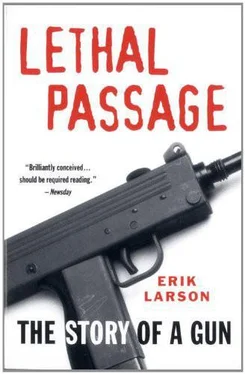
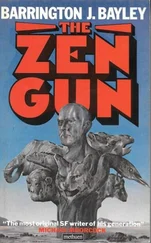
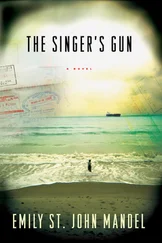

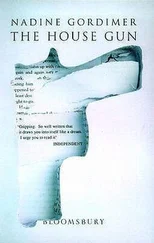

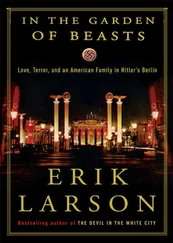

![Ричард Деминг - Whistle Past the Graveyard [= Give the Girl a Gun]](/books/412176/richard-deming-whistle-past-the-graveyard-give-t-thumb.webp)
